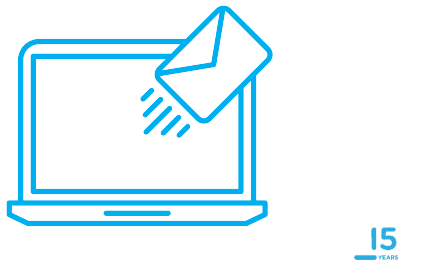Student retention remains one of the biggest challenges in higher education, with dropout rates continuing to concern institutions worldwide. For colleges and universities today, student retention in higher education has evolved into something far more holistic than it once was.
Recent data underscore the scope of the problem: roughly one in four undergraduates will leave college without completing a degree. For example, data from the Australian Department of Education shows that nearly 25% of higher education students who began in 2017 had not completed their programs by 2022. The United States reports a comparable figure, with NCES data showing first-year retention rates for full-time undergraduates averaging around 75% to 78%, indicating an attrition rate of approximately 22–25%.
Behind these statistics are myriad reasons. Financial pressures, mental health struggles, and a lingering sense of disconnection (exacerbated by post-pandemic-era remote learning) are among the top factors driving students to leave.
This early departure is not just a personal setback for students (many of whom incur debt without obtaining a credential) but also a serious concern for universities. Every student lost represents a missed opportunity to fulfill someone’s potential and a significant cost to the institution in lost tuition and wasted recruitment efforts. It’s no surprise, then, that in 2024/25 the conversation around student success has zeroed in on retention, keeping those first-year students engaged to graduation.
Amid these challenges, colleges and universities are exploring new ways to support students beyond the classroom. Interestingly, one of the most powerful tools is quite ordinary: email. While often associated with marketing departments or alumni fundraising, email communication has proven to be an unsung hero in student retention strategies. Done right, regular digital touchpoints – from welcome emails and deadline reminders to check-ins and newsletters – can nurture a sense of belonging and keep students from “falling through the cracks.” This blog post explains how.
What Is the Meaning of Student Retention?
Student retention refers to an institution’s ability to keep students enrolled continuously, usually from one academic term to the next, until they complete their program. Retention in higher education means the same as student retention, but in the context of colleges and universities. It typically refers to the percentage of students who return each year and progress toward graduation. It’s often measured as the inverse of dropout or attrition rates and serves as a key indicator of institutional effectiveness and student satisfaction.
But while the metric is important, it doesn’t tell the whole story. Retention intersects with numerous aspects of the student experience, including:
- Academic preparedness and performance
- Emotional and mental well-being
- Financial stability and support
- Social integration and sense of belonging
- Clarity around future goals and career pathways
In short, high retention signals that a school is providing the tools and environment students need to thrive. Low retention often suggests systemic gaps that need attention, whether in support services, communication, or curricular alignment.
When schools understand the deeper “why” behind retention patterns, they can begin building strategies to support students in more intentional and effective ways.
Why Do Some Students Stay and Others Leave?
Understanding college student retention means examining both barriers and motivators that influence whether a student chooses to continue or withdraw. Here are some of the most common reasons students make that decision:
1. Academic Challenges
A student who feels unprepared for their coursework or overwhelmed by expectations may quickly disengage. This can be especially true for first-generation students or those entering a competitive academic environment without sufficient support.
What helps: Proactive emails that demystify academic expectations, offer success tips, and highlight tutoring resources early in the term can make a real difference.
Example: At the vocational education level, Oconee Fall Line Technical College (OFTC) in Georgia provides a good example of communication-driven retention support. OFTC employs dedicated Retention Specialists who monitor student progress and intervene when issues arise.
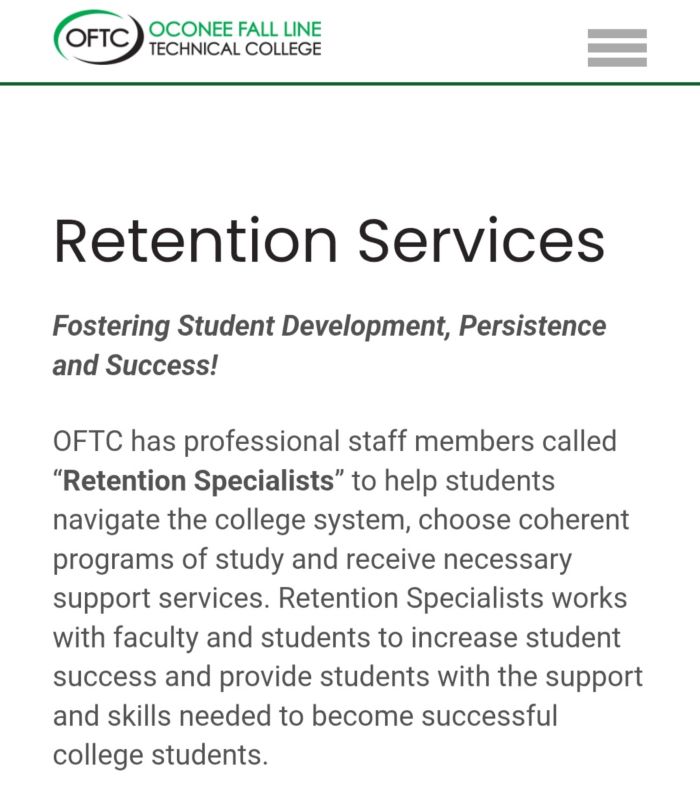

Source: OFTC
Using an internal early-alert system, the college flags at-risk students (such as those with irregular attendance or missing assignments) and initiates proactive outreach. Retention staff then reach out to students, often via college email or phone, to check in and connect them with help. This includes emailing a student about available tutoring when they struggle academically, or discussing solutions if a student is considering withdrawal.
2. Lack of Community or Belonging
The feeling of being “invisible” on campus can be just as impactful as academic performance. Students who don’t feel they belong are significantly more likely to leave, particularly during their first year.
What helps: Targeted emails that invite students to join clubs, attend welcome events, or connect with peers can foster a stronger sense of connection.
Example: AAPS circulates an official newsletter to share recent happenings in the pharmaceutical field and celebrate student achievements. Students consent to having their names and photos featured in these newsletters. This practice personalizes communications and recognizes student accomplishments. This targeted content helps build a sense of community and keeps current students motivated to persist in their programs.


Source: AAPS
3. Financial Stress
Tuition fees, housing costs, and daily expenses can make the college experience financially unsustainable for many students. Some may not even know what aid or resources are available.
What helps: Email reminders about scholarships, payment plans, emergency aid, or financial counseling empower students to seek help before small issues become major obstacles.
Example: In London, City, University of London runs City Cares, a dedicated support programme for vulnerable student groups – including those estranged from family, or young adult caregivers. A key element of City Cares is consistent personal communication: staff send regular check-in emails and updates to these students to see how they are doing and offer help.
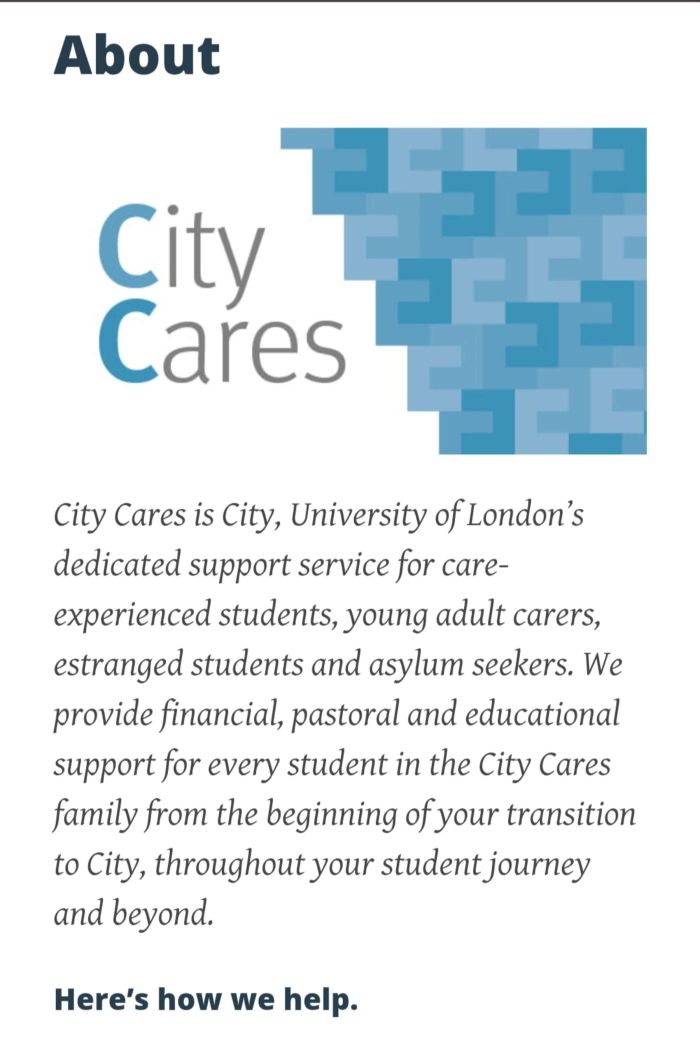

Source: City, University of London
Students in the program have a designated staff contact whom they can reach by email or phone for one-to-one support. City Cares also provides practical resources like bursaries, housing assistance, and priority access to opportunities, all communicated through targeted outreach.
4. Unclear Career Direction
Students who lose sight of how their studies connect to real-world opportunities often lose motivation. Without a sense of purpose, continuing can feel pointless.
What helps: Emails that highlight internship opportunities, alumni career paths, and academic-to-career connections help students stay focused and inspired.
5. Personal and Mental Health Struggles
From stress and anxiety to family emergencies or health issues, life challenges can derail even the most motivated students.
What helps: Compassionate, well-timed emails from student services that highlight wellness resources, counseling services, and peer support groups remind students they are not alone.
Example: DCC uses digital content to address student well-being, which is crucial for retention. A blog post on the college’s site, shared via email and social media, discussed how emotional well-being impacts learning, noting that a student’s mental health influences “focus, engagement, social interactions, and overall academic success.” By openly guiding mental health, DCC shows students and parents that the college cares about more than academics.
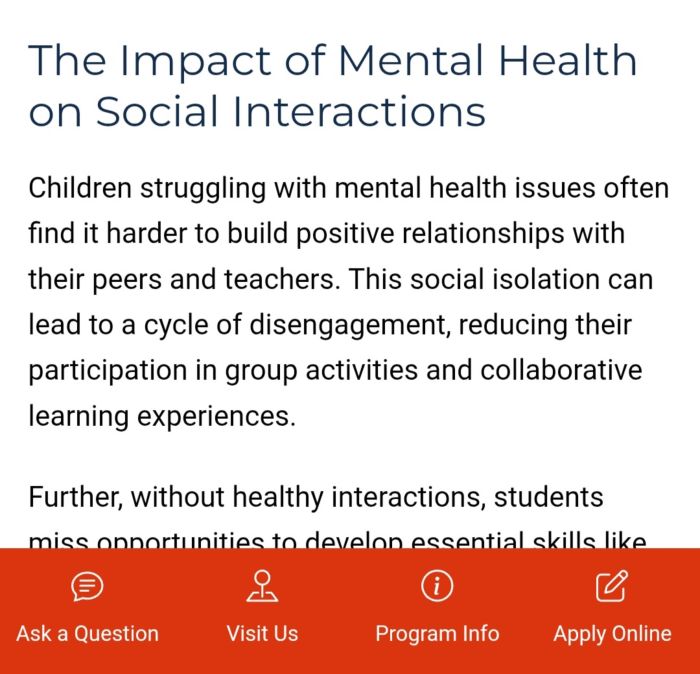

Source: DCC
In each of these cases, the common thread is communication. When institutions deliver the right messages at the right moments, they can provide reassurance, guidance, and pathways forward, all of which contribute to stronger retention outcomes.
How Email Marketing Supports the Entire Student Journey
Email marketing is not just about promotion. In the context of higher education, it is a structured communication framework that allows institutions to be consistently present for their students, especially when automated and segmented based on academic year, behavior, or demographic indicators.
Let’s take a look at how email can support retention from orientation through graduation.
Year One: Onboarding and Early Support
The first year is foundational. It’s where impressions are formed, habits are developed, and questions abound.
Effective first-year campaigns include:
- A welcome series that introduces campus leaders, outlines what to expect, and provides a friendly tone of engagement
- Resource emails such as “How to Book Time With an Academic Advisor” or “Top Study Spots on Campus”
- Surveys and wellness check-ins asking students how they’re doing and connecting them to specific supports based on their responses
- Invitations to student orientation events, campus fairs, and mentorship programs
This early outreach reduces anxiety and builds a relationship of trust. When students know they can expect relevant, useful information in their inbox, they are more likely to engage with their institution in meaningful ways.
Example: John Cabot University (JCU) has made student retention a priority through robust student services and outreach. The university’s communications team uses segmented email lists to target different student groups – first-year degree seekers, study-abroad students, etc.
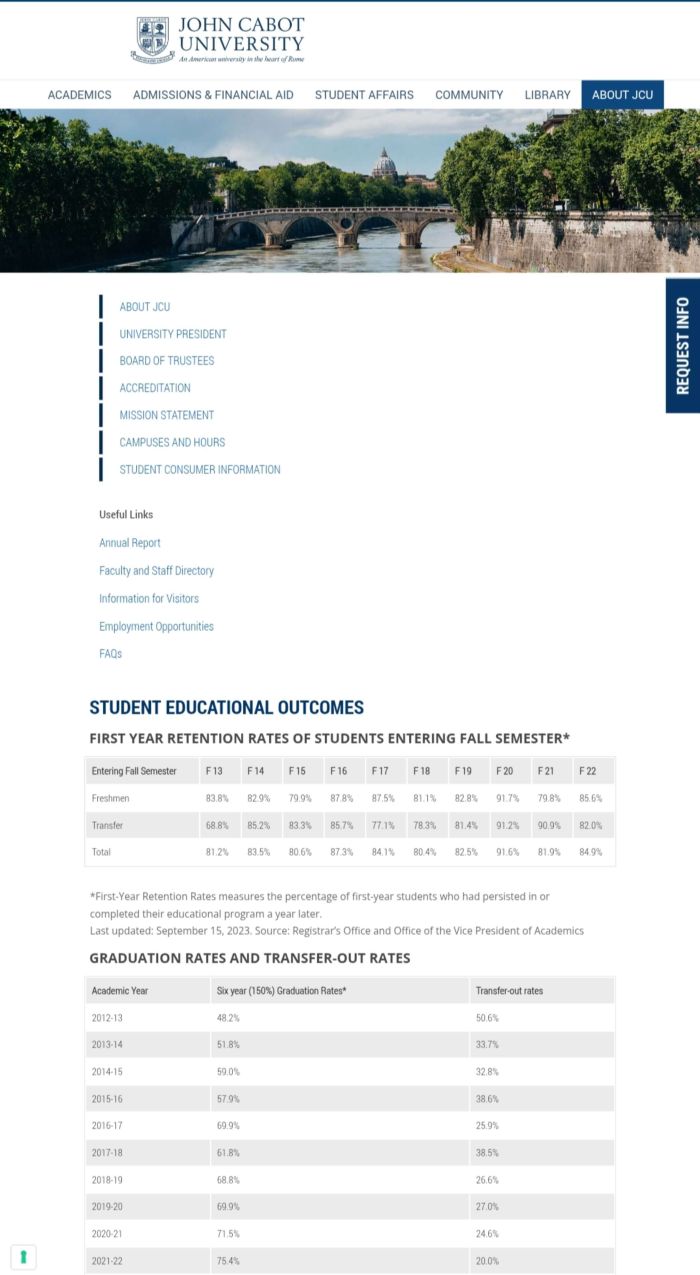

Source: John Cabot University
Upon arrival, all first-year students receive a series of orientation emails with tips on navigating campus life in Rome, introductions to support offices (counseling, academic advising), and invitations to community-building events. This email nurturing continues throughout the year. JCU’s focus on student engagement reflects its ongoing commitment to retention, with email outreach playing a key role in fostering community and support.
Sophomore and Junior Years: Momentum and Direction
The second and third years of college can be challenging. Students may experience mid-degree fatigue, uncertainty about their major, or a lack of motivation.
Email campaigns that support these years often focus on:
- Important academic milestones, such as major declarations, registration deadlines, or capstone requirements
- Career development, including internship announcements, networking events, or resume-building resources
- Personal development opportunities, like study abroad, research assistantships, or leadership training
- Wellness and retention-focused campaigns that flag disengaged students and prompt follow-up from advisors.
By continuing to communicate thoughtfully during this middle phase, institutions can ensure students maintain their momentum and receive targeted interventions before problems escalate.
Example: Southern Methodist University’s (SMU) Office of Student Success & Retention created the “Don’t Ghost SMU” initiative to re-engage students who stop attending without formally taking a leave. Each term, the university identifies “ghosters” – undergraduates who are neither enrolled for the coming term nor on an official leave of absence. The retention team then reaches out to these students three times via email and text message to ask about their plans and encourage them to re-enroll. Students who respond and decide to return are provided with one-on-one support to facilitate their re-entry.
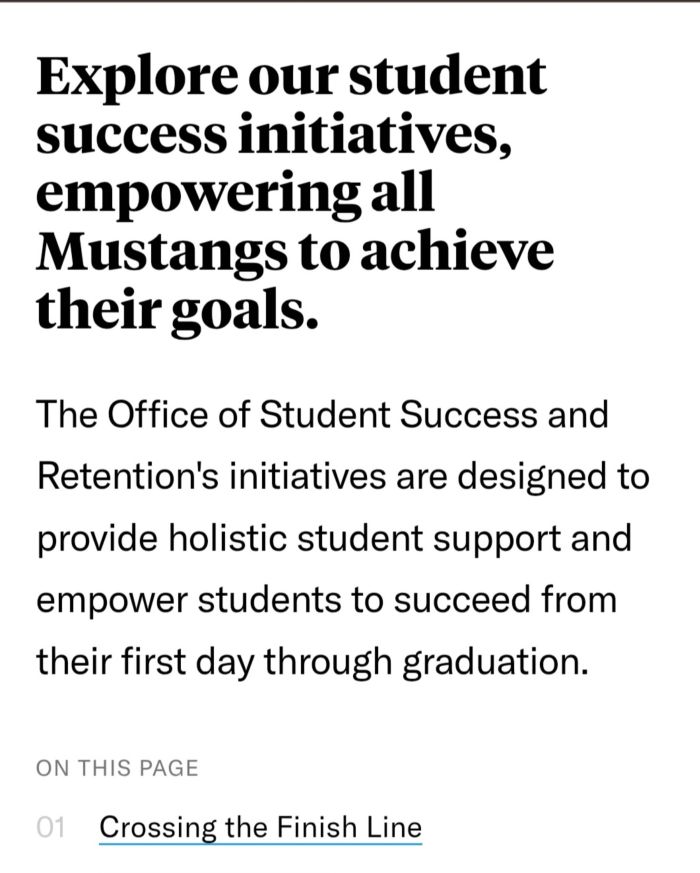

Source: SMU
Senior Year: Graduation and Beyond
Students approaching graduation often face a new set of stressors—final projects, job applications, and the pressure of “what comes next.” At this point, communication becomes about both support and celebration.
Senior-focused email strategies may include:
- Step-by-step graduation guides that include deadlines for forms, fees, and ceremonies
- Invitations to career prep workshops, mock interviews, or job search bootcamps
- Highlight reels of student accomplishments or alumni stories to boost morale and confidence
- Communications from deans or student leaders congratulating seniors and offering final words of encouragement
Example: NeuAge’s digital content provides career advice and skill-building tips as part of the institution’s ongoing commitment to graduates’ success. NeuAge also promotes free online workshops and webinars (often via LinkedIn and email) led by industry experts, giving current students and recent grads extra opportunities to network and upskill.


Source: NeuAge Institute
Best Practices for Retention-Focused Email Campaigns
If your institution wants to maximize the impact of email on student retention, consider the following best practices:
1. Segment Thoughtfully
A one-size-fits-all email won’t resonate across a diverse student body. Tailor content based on class year, academic discipline, or unique identifiers like international status or first-generation background. The more relevant the message, the more likely it will be read and acted on.
2. Use Automation With Intention
Automated emails shouldn’t feel robotic. Use your CRM to trigger messages based on behavior (like missed assignments or low engagement), but personalize them with the student’s name and relevant links or contacts. Automation should make the student feel seen, not surveilled.
3. Focus on Value
Each email should offer something of clear value: a helpful tip, a timely reminder, a story that inspires. Avoid sending messages just to fill space in a calendar. If the email doesn’t help the student succeed, it probably shouldn’t be sent.
Example: ENSR (a Swiss international school) maintains high transparency with parents through regular digital bulletins. The school posts and emails information on upcoming events. For instance, parents receive notices about scheduled parent-teacher meetings, ski trips, and even windsurfing camp well in advance. ENSR’s online parent info page archives these communications, noting what was sent when.
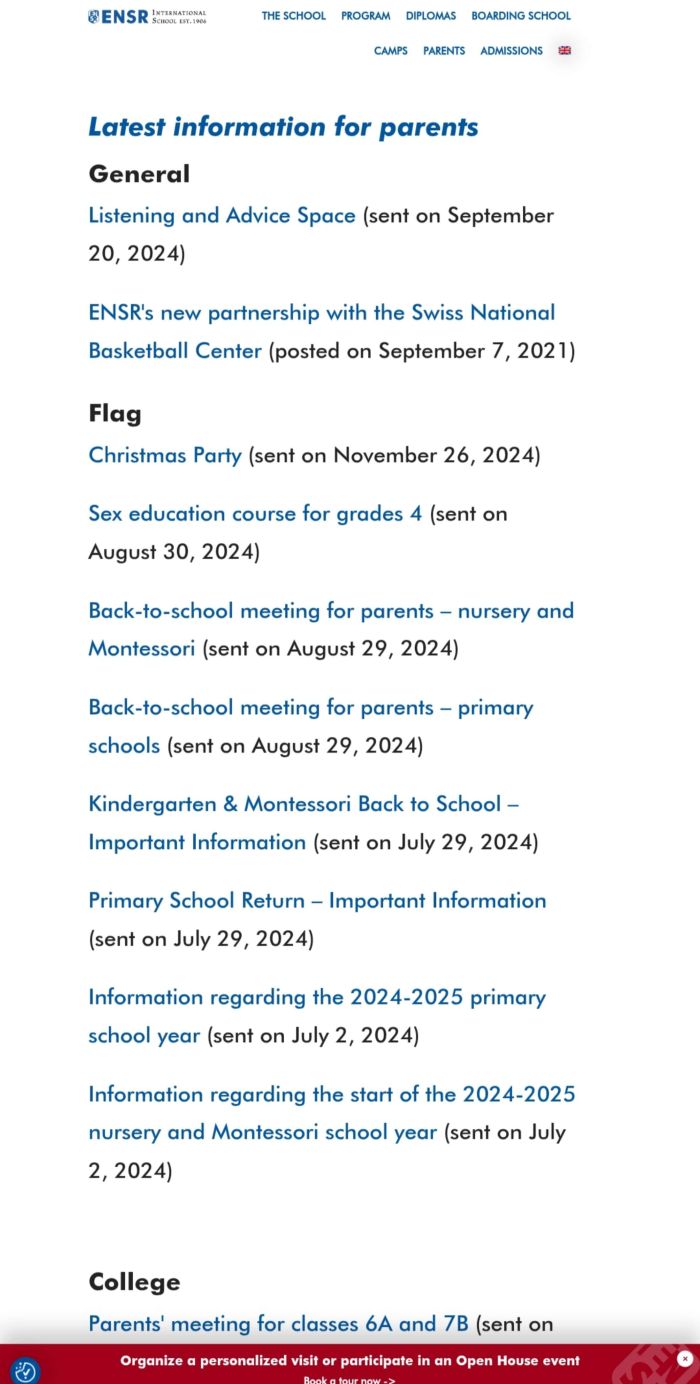

Source: ENSR
4. Monitor and Adjust
Track engagement data: open rates, click-throughs, and unsubscribes, and use this to inform future messaging. If a subject line isn’t working or a campaign doesn’t drive traffic, revise your approach. Feedback and responsiveness are key to any long-term strategy.
5. Collaborate Across Departments
Retention is not the sole responsibility of academic advising or marketing. Develop integrated campaigns that align messaging across departments, including career services, financial aid, and student wellness, so students receive cohesive, coordinated communication.
Why Email Marketing Belongs in Your Retention Strategy
Email marketing offers something uniquely powerful: it meets students where they already are, with messages that can be scheduled, targeted, and personalized at scale. When done well, it brings a human touch to institutional processes, building relationships that motivate students to stay engaged.
More than a tool for reminders or promotions, email can:
- Prevent students from slipping through the cracks
- Foster emotional connection and institutional pride
- Reinforce the idea that success is not only expected, but supported
Ultimately, when students feel informed, included, and inspired, they are more likely to persist through challenges and complete their degrees. And that’s the heart of any successful retention strategy. Would you like to work on effective strategies for greater Higher Ed Student Retention?
Frequently Asked Questions
Question: What is the meaning of student retention?
Answer: Student retention refers to an institution’s ability to keep students enrolled continuously, usually from one academic term to the next, until they complete their program. Retention in higher education means the same as student retention, but in the context of colleges and universities.
Question: What is retention in higher education?
Answer: Retention in higher education means the same as student retention, but in the context of colleges and universities. It typically refers to the percentage of students who return each year and progress toward graduation. High retention in higher ed indicates that students are staying enrolled and on track to finish their degrees.
Question: What are the reasons for student retention?
Answer: Students are more likely to be retained (stay in school) when key needs are met. Common reasons for strong student retention include effective academic support (so students don’t fall behind), a sense of belonging on campus (feeling connected to peers and the school), financial stability or aid (relieving tuition stress), and clear personal motivation or goals (seeing the value of their degree). Essentially, when students feel supported academically, socially, and financially – and they believe their education will benefit them – they are far more likely to stay through graduation.


